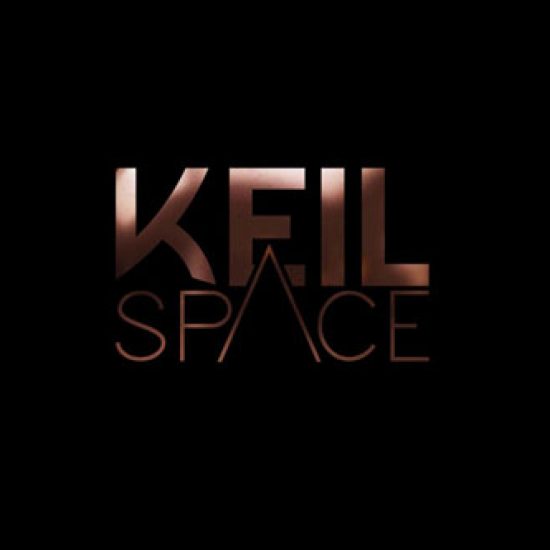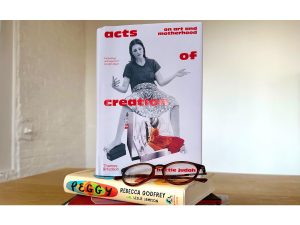Keil Space: An Inner and Universal Journey
In the realm of art and healing, Keil Space in Florence stands out as the first art space in the world entirely dedicated to Advanced Art and its applications. The space founded by Samantha Keil, a master in bronze from a long bloodline of artisans linked to the English Crown, welcomes visitors into a true art territory, where they embark on an aesthetic journey through an experiential topography. The path combines the power of visual, sculptural, and figurative art with the realms of sight, smell, and sound, creating a multisensory experience that awakens an inner world, that is often numbed by our fast-paced lives. The first stop of this journey is the room of the three columns, icons of Keil’s thought, followed by the room dedicated to the First Generation Bronze, which masterfully captures the movement and life of primordial beings.
In the next room, the Second Generation Bronze uses light to represent a bridge connecting ancient, present, and future civilizations. Here, Keil, according to art critic Rolando Bellini, has reached a “new level of formative purity.” With her technique, the artist has managed to “sculpt light.” The visit culminates with the works of the New Generation Bronze, which show an unprecedented perspective: the infinitely small bronze becomes immensely large of the cosmos, evoking new visual stimulations and enhancing the psycho-physical well-being of visitors. The peculiarity of Keil Space lies in the care given to the observer: the 500 square meters of exhibition space is designed to accommodate one person at a time. The individual experiences the journey firsthand and engages in a direct dialogue with the space and the works, in a path that fosters personal expression and awareness through art. Keil Space reminds us that art is a powerful tool for connection and personal growth, a continuous journey toward understanding and celebrating our deepest essence. It acts as a safe platform where everyone can feel protected and free to express their perceptions without any barriers of judgment or conditioning. In today’s context of the art system, increasingly elitist, Keil Space is a place dedicated to restoring the accessibility of the art dialogue, rebuilding trust in the observer, and making them the protagonists of the artistic experience. In a contemporary society that favors standardization to increase efficiency and productivity, Keil Space values individuals in quality as human beings, and not as numbers. At the end of the visit, each person is allowed to leave a brief testimony to share their feelings and opinions about the experience.
People from diverse social, geographical, linguistic, and professional backgrounds have visited the space, expressing varied points of view while sharing very similar emotional reactions, demonstrating a common ground that transcends individual differences. Visitor testimonies highlight feelings of peace, light, and tranquility, confirming the therapeutic benefits of art.
From the Audiovisual Archive of Keil Space, various types of testimonies emerge, notably comments from several psychiatrists describing the space as a “stimulus for exploration,” a “dreamlike dimension,” “art as a vehicle for a dialogue about human interiority,” and a “message of trust and self-esteem,” “a new approach to art that encourages contemplation and deep reflection.”
For sector experts, there is no doubt that along with art, science, and technique, there is certainly an emphasis on the therapeutic power of art.
Advanced Art: The Art that Benefits Humanity
Can art unite and connect with oneself and others? How can art be therapeutic? Throughout human history, there are countless examples of the therapeutic and social uses of art. In ancient civilizations, highly detailed and complex monumental works were erected for ritualistic, psychological, and social purposes. Consider, for example, early manifestations of advanced art, such as the monoliths of Göbekli Tepe, Sumerian art, Ancient Egypt, and the hidden wonders of pre-Columbian Americas. The common element in all these civilizations is that art was seen not as a cure for specific illnesses but as a continuous approach to self-care.
This legacy is embraced by Keil Space’s philanthropic project, which aims to open the accessibility of artistic dialogue to everyone, allowing people to embark on a journey of self-discovery and connection with universal values through art.
The legacy of Advanced Art and new technologies come together to foster introspection and increase concentration, inducing emotional release and sensations of peace and tranquility. The therapeutic benefits of Keil Space’s artistic experience affect the cognitive and emotional spheres of individuals, as confirmed by the QDAS study analyzing visitor testimonies, highlighting how Sam Keil’s art can facilitate inner and social well-being.
Art and Healing
In “Using Creative Arts in Therapy” (1984), Bernie Warren, an emeritus professor from London and a researcher in performing arts and psychology, emphasizes the need for individual engagement with art to achieve well-being, individually and collectively. This is how the concept of “Arts for Health” was coined to indicate the benefits of participating in creative activities. By navigating the realm of beneficial art, individuals can “express their spark of humanity” – says Warren – leaving a mark that no one else could leave. What creative therapy can do is maintain the well-being of individuals, always aiming for society’s well-being. French sociologist and anthropologist Pierre Bourdieu, one of the most important intellectuals of the 20th century, considered the art world as a “space of relationships,” and it is precisely in this relationship that the proposal of creative therapy is situated. For Bourdieu, art is functional in “provoking and managing individual or collective encounters.” However, the current context, especially that of the mainstream art market, excludes most people from encountering artistic processes, and it is on processes, rather than the product, that the focus of art for healing lies.
The Union of Science, Art, and Psychology
To provide a scientific foundation for the benefits that Keil Space’s art brings to visitors, as anticipated by the testimonies mentioned above from specialists in psychotherapy and neuroaesthetics, an important data analytics study by the British company QDAS has been added to the research. The British company, a leader in qualitative data research, has worked with some of the world’s most prestigious universities, especially in England and America, and has also handled data analysis for important organizations such as the World Health Organization.
QDAS conducted a detailed analysis of data collected from the testimonies given by observers, coding them with state-of-the-art software. 500 people aged 17 to 80 and from all segments of society have shared their opinions about the experience they had at Keil Space. Among these are: senses, peace, relaxation, reflection, tranquility, and curiosity.
Sources:
Keil Space Audiovisual Archive.
QDAS, Data Analytics Report for Keil Space.
Bourdieu, P. Practical Reason. Stanford University Press, 1998.
Warren, B. Using the creative arts in therapy and healthcare: a practical introduction. Routledge,
2008.
https://www.lanazione.it/pubbliredazionali/nei-meandri-di-keil-space-con-lo-storico-dellarte-rolando-
bellini-te0q990b
https://www.lanazione.it/pubbliredazionali/keil-space-larte-del-risveglio-a-firenze-fbhfogyp




